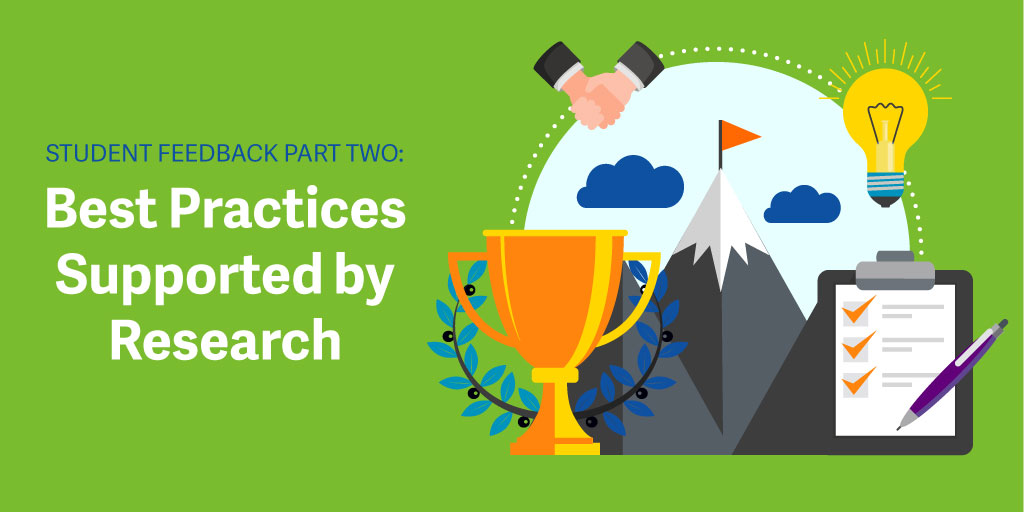
In part one of our feedback series, we reviewed the types of feedback that we most see used in the classroom. These types of feedback each have a role to play. When we correct a student’s learning, encourage them, and affirm their good work, we build relationships and trust with them. All educators know how important this is and how it must occur first before deep learning can take place.
But when it comes to learning, this kind of feedback doesn’t really impact the student much. They might feel good about the support that is being offered, but how often do they actually learn from this kind of feedback?
Helping Students Move Forward
It is important to step back and articulate one of the most important factors to how we respond to students: how many are engaged in the response at once. Almost all of the examples of feedback in part one are responses to individual students in a classroom. This is an important component to any classroom, but while one student is affirmed or encouraged, what are the rest of the students doing?
And this gets us to what research supports is the best kind of feedback for students: information about their learning. The research of Deci and Ryan in the late 90s about motivation shows us that praise and rewards are not effective types of feedback for students to learn more (i.e., they do not positively impact student achievement). What does impact student achievement is giving students specific information about their learning and using strategies to move them forward.
The underlying assumption in providing feedback in this way is that the teacher knows where the student’s learning currently stands. In order to move someone forward, it requires knowing where the person currently is. There are many ways to gather this information—read this article about checking for understanding and how teachers can gather this feedback quickly and easily in a 1:1 classroom. This is the reverse of what feedback typically means, as teachers are getting feedback from the students and not giving feedback to them.
Achieving Deeper Learning
If the teacher knows where the students stand, there are strategies that they can use to help the student learn. As we get into the specifics of this, we can think about the different ways that we can give feedback to students about their learning. Our intent, most of the time, is to deepen learning and develop critical thinking skills. So, we need to ask ourselves, how do we go about doing this in the classroom?
Practically speaking, here are some ideas for teachers to move students to deeper learning through feedback:
- Different viewpoints: This is a type of feedback that helps to broaden and deepen a student’s understanding of an issue. If we know that the student currently understands something, we can give them feedback to move them to think about it from another angle or perspective. History and literature are perfect examples for how we can use different viewpoints as a teaching tool through feedback. More specific to writing, here are some further tips for how we can help students to see a different point of view.
- Providing more/less information: Feedback is more than just responding “good answer” to students. In this strategy, teachers might provide feedback in the form of additional information. Think of a concept that a student has been nearing. The teacher can add context to it to deepen the understanding. In the same way, the teacher could remove information to get the students to think. For example, “The general didn’t know _____ before the battle, how would that have changed the outcome?” or “Go back to the beginning and remove the data about _____, what strategy would you use to find the answer?”
- Alternative strategies: As students are able to easily solve problems or apply strategies to concepts, teachers can increase the rigor by requiring students to use alternative strategies. This kind of feedback helps students to adjust their thinking. It not only helps to deepen their understanding, but also helps students to see that there can be various paths to success in learning.
These are just three methods for using feedback to help deepen students’ learning. Feedback is much more than just praise and corrective guidance. As teachers respond to students, they can give feedback to push them to new ideas, concepts, and learning—and hopefully a deeper understanding of the topic at hand as well.
Did you miss the first part of our feedback series? Check it out here. And don’t forget to check back next week for the third and final part of this series, which will cover how feedback can help educators move students through learning. Subscribe to the Educator blog to make sure you don’t miss it!



